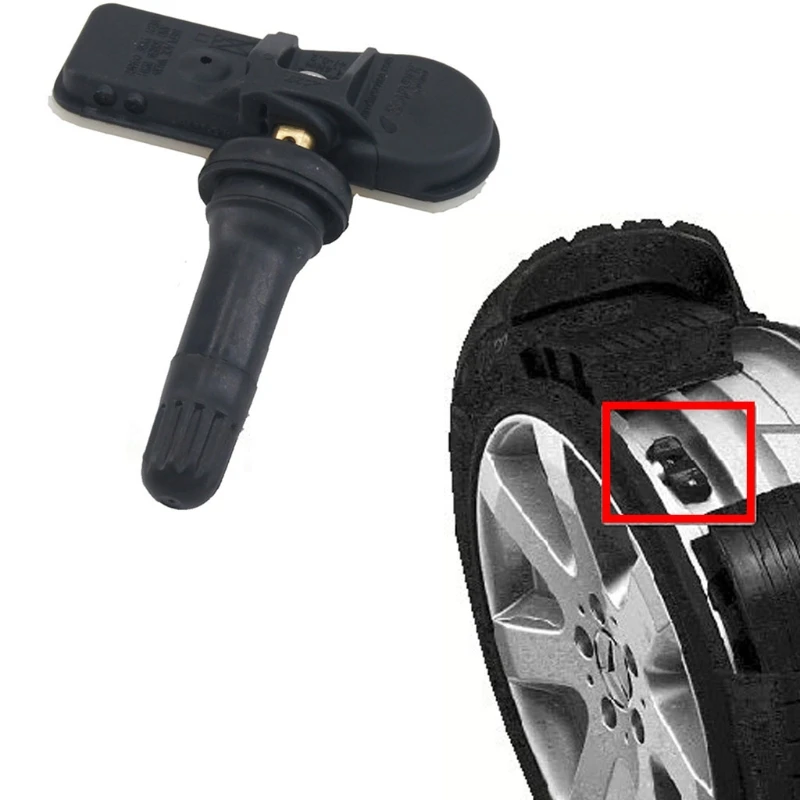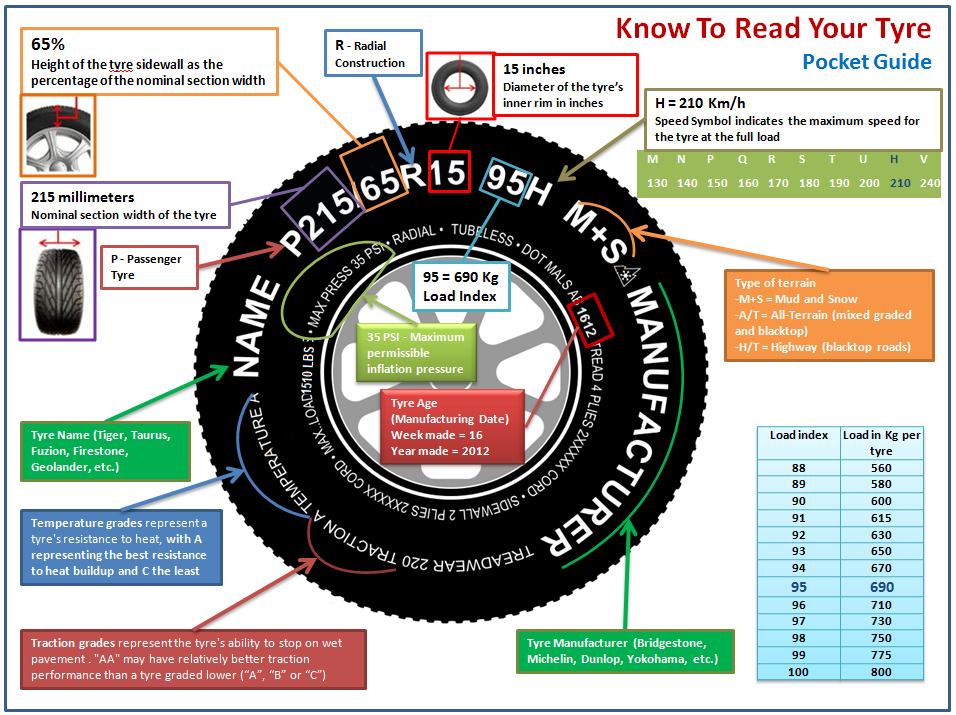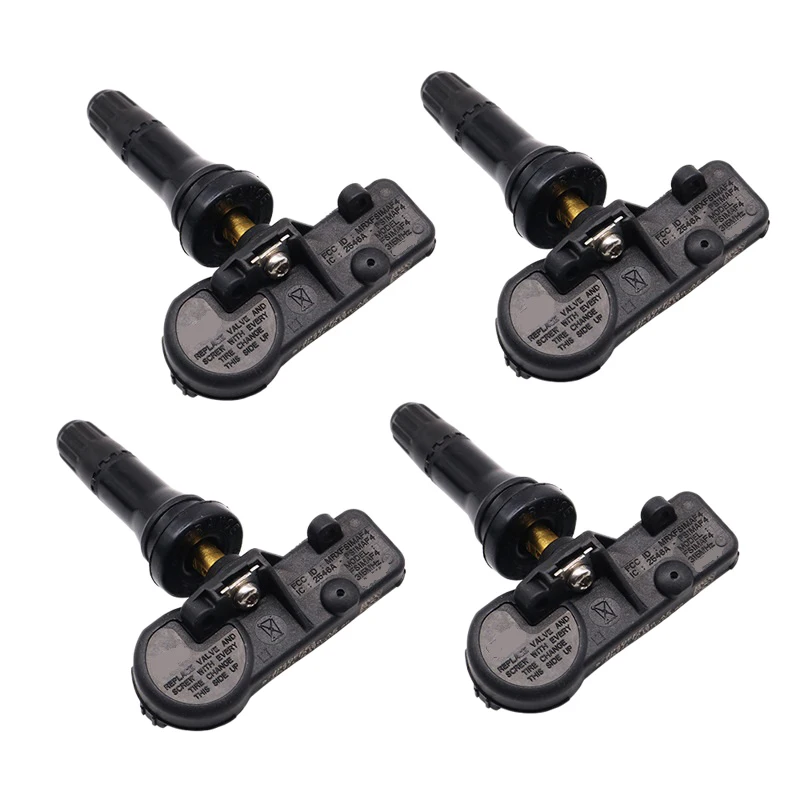Owning and driving a car can be a joy, but when sensors start going off it can become a pain. One of the most common sensors that go off and even fail are the tire pressure sensors. These sensors are a part of the tire pressure monitoring system or TPMS for short and most often one of the first parts to go bad in the system.
With all vehicles produced after 2008, at some point you are going to have to replace one of these sensors, so how much is it going to cost you? Typically, a sensor can cost anywhere from $60 up to $100, all depending on the make and model of your vehicle. Note that these prices do not include labor costs.
What Is a Tire Pressure Sensor?A tire pressure sensor is as advertised, it is a sensor that measures the air pressure inside your tire. The purpose of this is to warn the driver of a dangerous situation in the form of a flat tire or potential blowout.
The sensors work by transmitting a low-frequency radio signal with the tire’s measured air pressure to the vehicle’s computer. From here your vehicle with have a read-out of the current tire PSI or it will simply have an amber warning light if pressures are out of the safe range.
Due to necessity, the sensors are wireless which means they have batteries, which brings us to the main reason for failure, a flat battery. Most air pressure sensors last for around ten years, at which point the battery fails and the sensor needs to be replaced.
There are a couple of other reasons why sensors fail, namely physical damage. Physical damage can come in a couple of forms; hitting a pothole, driving on a very flat tire, moisture in the tire, or even damage from a mechanic when getting a tire changed or repaired.
How Much Does It Cost to Replace a Tire Pressure Sensor?For the most part, a tire pressure sensor will cost you around $60 to $100. These prices do vary depending on the make and model of your vehicle. Sensors for higher-end vehicles will obviously cost more and so will sensors that detect and transmit exact pressures.
These prices do vary depending on the make and model of your vehicle. Sensors for higher-end vehicles will obviously cost more and so will sensors that detect and transmit exact pressures.
Additionally, you will have to pay for labor to install the sensors. Labor costs will vary greatly depending on the state you live in and also where you decide to get the work done. A general rule is that larger companies and dealerships charge more than smaller, local auto and tire repair shops.
How Important Is a Sensor to Replace? Can You Drive with A Busted Sensor?If one or more of your tire pressure sensors stop working, you are still able to drive. A bad sensor will not cause more issues in the short term, the long term however is a different story. If left unrepaired, a sensor could cause errors in your vehicle’s computer system which is a much bigger bill than just replacing the sensor.
Though possible, a computer problem is less likely to happen than the tire damage due to incorrect and unchecked tire pressures. After all, the sensor is there to help you maintain your tire pressure and keep your
tire healthy.
After all, the sensor is there to help you maintain your tire pressure and keep your
tire healthy.
Other than the labor costs, there are a couple of extra costs that you may incur when getting a new sensor installed. Some of these additional costs are necessary while others are recommended, either way, your mechanic will most likely try to push for some of these costs.
Common MaintenanceAdditional costs can come in the form of common maintenance. When it comes to tires, common maintenance translates to performing tire rotations and wheel balancing. When you get a new tire pressure sensor then you will need to have your wheel rebalanced.
There is no guarantee that the tire will be balanced after a new sensor has been installed, even if the wheel was perfectly balanced before the installation. Furthermore, having balanced wheels is important because an unbalanced wheel will
damage the tire.
Where wheel balancing is just about necessary, tire rotation isn’t as critical, especially if you get your tires rotated when you get your oil changed. Keep in mind that tire rotation is indeed important as it will vastly increase your tire’s life span due to evening the tires’ wear.
New TiresOne potential unforeseen cost could be new tires. You may not notice that your tires are in fact worn to the point that you need a new set of tires. For the most part, the company performing the installation will simply try to sell you new tires, however, if your tires are deemed unsafe then you could run into some issues.
In some cases, a shop will refuse to hand the vehicle back to you if your tires are found to be hazardous while other shops will refuse to perform the work on your vehicle. If the tires on your vehicle are older, keep in mind that the shop may push for you to get new tires.
Can You Reset the Sensor?Sometimes a sensor simply needs to be reset as opposed to being replaced. There are certain issues that can be fixed by resetting the sensor. These issues are commonly caused by tire rotations, temperature changes, and refilling your tires.
There are a couple of different ways to reset the TPMS. These ways can differ depending on your vehicle’s make and model. A TPMS reset can most likely be done from the driver’s seat, however, there is no industry standard here so have a look in your user manual.
Some common tips for resetting your TPMS are to manually check your tire pressures, drive the vehicle for around 30 minutes and then shut it off for the night. Often times doing these tricks will save you hundreds of dollars.
Technically it is possible to do the work yourself, however; the process isn’t as easy as changing your own oil. Firstly, you will need the proper equipment, especially because the tire has to be removed from the wheel itself.
Secondly, you will need the equipment to program the new sensor in order to link it to your TPMS. Even if you have all the tools, you need to have the knowledge as well. This includes how to remove and replace the tire on your rim and how to program the system.
All in all, it is possible but if you are not an automotive professional with all the right tools, it is probably not going to be worth it. Both in the sense of time and money.
ConclusionTo sum it all up, the cost of replacing a tire pressure sensor will vary greatly depending on the make and model of your vehicle. Expect to pay anywhere from 60 to 100 dollars plus the cost of labor which can total the cost upwards of 200 dollars.
There are a couple of ways to reset the sensors that will prevent you from dishing out the cash, however; tire pressure sensors lose their battery power after about ten years so if you have an older vehicle don’t be surprised when this happens.
Furthermore, you could replace the sensors yourself to try and save on labor costs, however, it is probably going to be cheaper and easier just to take your vehicle into your local tire service center. Remember, you can save some additional costs by staying away from dealerships and the larger big brand auto repair shops.
It is rather impossible to overemphasize the importance of tires because without them, all engines and transmissions would be redundant. Keeping your tires in optimal condition requires you to always use functioning TPMS (Tire pressure monitoring sensors), so be sure to read this article to find out what they do and how much does it cost to replace them.
It takes less than one hour to change all four TPMS modules if you take your car to a credible tire shop. This means that the costs of TPMS replacements include a minimal labor fee in addition to the componentry that tends to cost somewhere in the neighborhood of $30-$50.
Added up, it should cost you between $70-$150 per wheel. Granted, this also depends on the make and model year of your vehicle and the availability of parts. You may be able to replace a single sensor, but if the remaining three sensors are more than 10 years old, you should replace them all at once.
A TPMS (Tire pressure sensor) is an intricate piece of engineering designed to constantly monitor the air pressure within the tire. Most tire pressure monitoring sensors are designed to detect when the tire air pressure falls below a certain threshold and then alert the driver via a dashboard warning light.
Most tire pressure monitoring sensors are designed to detect when the tire air pressure falls below a certain threshold and then alert the driver via a dashboard warning light.
These sensors are placed inside the tire and are commonly being powered by a small battery. Back in 2000, the US government made the use of TPMS a legal requirement for all cars sold past the year 2000. This means that all cars nowadays come with tire pressure monitoring sensors as they are an essential aspect of on-road safety.
Poorly inflated tires are unable to properly support a car’s weight, they increase your braking distances and make the car less maneuvrable, especially at high speeds. According to a prominent TPMS manufacturer Schrader, more than a quarter of a million accidents are being caused by under-inflated tires each year.
Back in the early 2000s, NHTSA stated that tire-inflation-related issues cause more than 10,000 injuries each year, so it’s rather obvious why we need functioning tire pressure monitoring sensors. These sensors tirelessly monitor the air pressure within the tire while also communicating with the car’s ECU through low-frequency radio waves.
These sensors tirelessly monitor the air pressure within the tire while also communicating with the car’s ECU through low-frequency radio waves.
Whenever the system deems the air pressure is way too low, you will be alerted which means that you will either adjust your driving style accordingly or completely pull over. These sensors also ensure that you always use the correct amount of fuel because under-inflated tires also use more fuel due to increased levels of tire rolling resistance.
Driving without a tire pressure monitoring system is certainly a risky thing to do, especially if you often drive at higher speeds. As these sensors tend to wear out, they need to be replaced in due time. However, most people out there use their cars for daily driving purposes and it’s not always easy to cancel everything and take your car in for a service.
If you are in a pinch, you can drive the car even without a tire pressure monitoring sensor. However, always keep a sentient eye on your tires and be sure to adjust your driving style accordingly. If you are positive that your tires are properly inflated, you may be able to drive the car and nothing should ever come of it.
However, always keep a sentient eye on your tires and be sure to adjust your driving style accordingly. If you are positive that your tires are properly inflated, you may be able to drive the car and nothing should ever come of it.
Nonetheless, if you are not in a hurry and you can take your car in for a TPMS replacement, be sure to do so at your earliest convenience. While driving without a tire pressure monitoring sensor, be sure to read this article if you want to find out how you can tell if your tires are too low while behind the wheel.
Most TPMS’s tend to last about 5-10 years, but given the fact that they are not the easiest nor the cheapest components to replace, most people tend to swap them whenever it’s necessary. This means that they tend to replace them only when the battery dies or when other TPMS components fail.
A TPMS fix is only possible if the reason why it failed in the first place can be resolved without needing to replace the whole unit. There were instances where owners complained about their brand-new tire pressure monitoring sensors failing only after a year or two of use.
There were instances where owners complained about their brand-new tire pressure monitoring sensors failing only after a year or two of use.
A common reason why is if the sensor was damaged beforehand, it used a faulty battery, or because it came with a manufacturing defect. Sometimes a brand new battery can replenish your old sensor and give it a brand new life, but you should not use the same sensor for more than 10 years max.
This can be caused by either a faulty sensor, a slow puncture, swift ambient temperature shifts, recent tire replacement, or because your wheel speed sensors are malfunctioning. These sensors are not designed to last a long time and the reality of it is that you are eventually going to experience some form of issues with them.
If your tire pressure monitoring sensor light stays on, but you are 100% positive that your tires are absolutely fine, the best thing you can do is to replace the sensor. Indeed, you can also repair it in some instances, but the price differences between repairing them and replacing them are marginal, so it’s always better to just get a brand new one.
Indeed, you can also repair it in some instances, but the price differences between repairing them and replacing them are marginal, so it’s always better to just get a brand new one.
Most tire shops out there are going to charge you anywhere between $70 to $150 for a TPMS replacement per single wheel. This is because the components such as batteries, sensors housings, and chips tend to cost somewhere around $30-50 while the labor costs can cost up to $100.
It also depends on which type of car you are driving, the type of TPMS, and the availability of parts. If your sensors are already more than 10 years old, it’s always better to replace them all rather than one by one, even if the remaining three are not showing any signs of old age.
Wheel Kit solar-powered automatic tire pressure monitoring system External tire pressure sensor VKG
In stock in Kiev
Delivery across Ukraine
1 166 UAH
1 424 uah
Buy
DE8T1A180AA Ford tire pressure sensor
In stock
Delivery across Ukraine
1 000 uah
Buy
Automatic tire pressure monitoring system Wheel93
Solar-powered external tire pressure monitoring system FML Kit0003
In stock in Kiev
Delivery across Ukraine
1 290 UAH
1 548 UAH
Buy
Tire pressure monitoring system (TPMS) tuning module and 4 LTR-01 TMSG PRO31SGUN sensors TOP
In stock
Delivery across Ukraine
12 730 hryvnia
Buy
Wheel Kit solar-powered automatic tire pressure monitoring system External tire sensor ZMM
In stock in Kiev
Delivery in Ukraine
1 182 UAH
1 440 UAH
Buy
Tire pressure sensor Tesla
in warehouse
Delivery in Ukraine
700 UAH
1 000 UAH
Buy
Summary original Toyota Lexus 42607-0C070 42607-08010
Delivery across Ukraine
1 540 hryvnia
Buy
Tire pressure sensor activator TPMS EL-50448 for GM car
Rivne 9Ol000 BB
Delivery across Ukraine
1 155 UAH
Buy
Tire pressure sensor original Ford Lincoln DE8T-1A180-AA
Delivery across Ukraine
1 155 UAH
Buy
0003
Tire pressure sensor original Ford Lincoln HC3T-1A180-AB
Delivery across Ukraine Delivery across Ukraine
340 — 575 UAH
from 2 sellers
340 UAH
Buy
BMW tire pressure sensor 36106856209
In stock in Ukraine 9003 Delivery
003
610 UAH
Buy
Sensors Tires in the tires Volkswagen Touareg/ Porsche 5q0907275b
in Ukraine
1 03000 Chrysler/ Peugeot/ Lancia
In stock
Delivery across Ukraine
820 UAH
Buy
Tire pressure sensor 407000003R for Renault Laguna III, Megane III
in warehouse
Delivery in Ukraine
1 025 UAH
Buy
Air pressure sensor in tires 4260706011 for Toyota Prius
in warehouse
Delivery
820 GRN
Buy
Air Dressing Summary tires 8200281399 for Renault
In stock
Delivery across Ukraine
820 UAH
Buy
Tire pressure sensor 8200023746 for Renault Laguna II, Megane, Scenic, Espace IV, Vel SatisOl000
609 UAH
Buy
Tire pressure sensor activator TMPS EL-50449 for Ford Lincoln Mercury
In stock in Rivne
Delivery across Ukraine
410 — 662 UAH
from 2 sellers
410 UAH
Buy
SECTION TISKEN BMW Tires: 5 Series, 6 Series, 7 Series, X3, 36106887147
Delivery from Kiev
582 UAHBuy
D /30 (105v108) S180052094A 4250C477 Air pressure sensors in the tires of Mitsubishi 433MHZ TPMS
Delivery in Ukraine
700 UAH
Buy
D/31 (20) F2GT-1A180 -Cc in Ukraine
700 UAH
Buy
GX63-1A159-AA S180052076 LR070840 C2D47173 DEARS OF DEVELOW in RANGE ROVER JAGUAR
Delivery in Ukraine
9000 UAH 9000- AB C2D43636 LR066378 Tire pressure sensor Jaguar Land RoverDelivery across Ukraine
0003
700 UAH
Buy
Activator of pressure sensors in TMPS EL-50449 tires for Ford Lincoln Mercury
in a warehouse in Rivne
Delivery in Ukraine
UAH
of 2 sellers
410 UAH 9000
Buy
Car service "Your Wheels" sells tire pressure sensors in Moscow. Car owners living in CJSC, SEAD, SZAO can purchase TPMS systems with turnkey installation. The profile masters of our service at low prices will perform the installation of meters with registration of sensors in the on-board computer. This service can be used provided that the use of a device for monitoring air pressure is provided by the manufacturer of a particular modification of the car.
Car owners living in CJSC, SEAD, SZAO can purchase TPMS systems with turnkey installation. The profile masters of our service at low prices will perform the installation of meters with registration of sensors in the on-board computer. This service can be used provided that the use of a device for monitoring air pressure is provided by the manufacturer of a particular modification of the car.
The TPMS system is a set of sensors with a signal receiver and a control unit designed to monitor tire temperature and pressure. Information to the driver is displayed on the dashboard or in the form of separate indicators. The design of the sensors, which are the key elements of the system, includes several components: a transmitting antenna, a battery, a tire pressure and temperature gauge.
Depending on the installation option, you can buy sensors of the following types:
 Screw on instead of caps. When the pressure changes, a special valve moves. Control by the color of the outer surface: "normal" - green, "need to pump up" - yellow, "very low" - red.
Screw on instead of caps. When the pressure changes, a special valve moves. Control by the color of the outer surface: "normal" - green, "need to pump up" - yellow, "very low" - red. Replacement of the pressure gauge is required in case of mechanical damage or exhaustion of the resource assigned by the manufacturer. Service life, as a rule, does not exceed 10 years. During intensive operation with maximum loads or under extreme conditions, this period is 1.5–2 times shorter.
Decrease in pressure in tires below the set one leads to an increase in the resistance of the wheels to rolling. As a result, tire wear and fuel consumption increase with deterioration in handling. In emergency cases, it is possible to rotate the tire on the disk or stall. The purchase of TPMS sensors will allow you to constantly receive information about the condition of the tires in order to respond to problems in a timely manner to prevent accidents related to rubber damage.
As a result, tire wear and fuel consumption increase with deterioration in handling. In emergency cases, it is possible to rotate the tire on the disk or stall. The purchase of TPMS sensors will allow you to constantly receive information about the condition of the tires in order to respond to problems in a timely manner to prevent accidents related to rubber damage.
Advantages of sensors supplied by our company:
We have a large selection of certified components from trusted manufacturers with a guarantee. All work is carried out by specialized craftsmen with experience. Before changing the sensors, a free diagnostic is carried out.